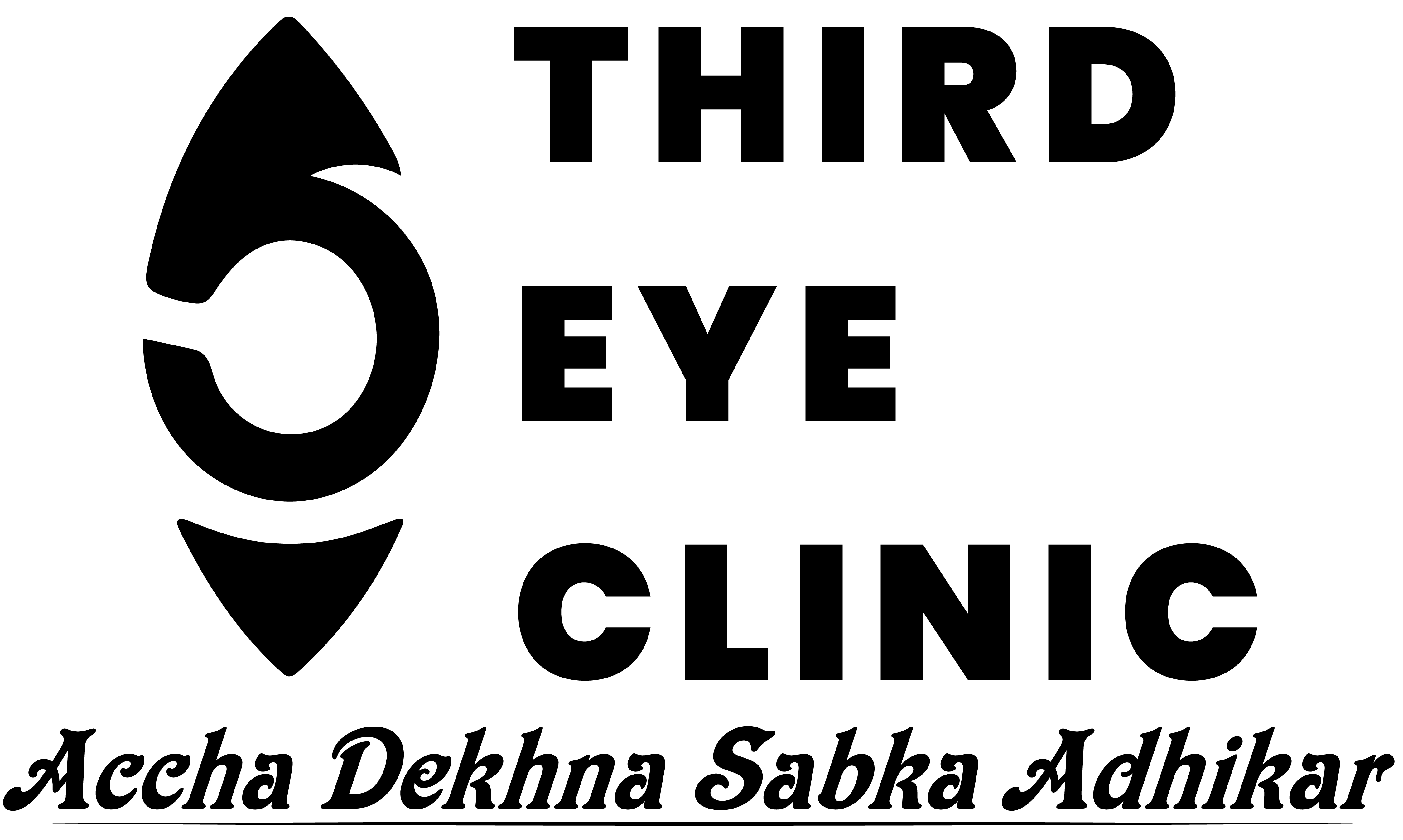Glaucoma
Glaucoma: A Silent Thief of Sight
Glaucoma is an eye condition that directly damages the optic nerve (the bundle of nerve fibers that carries information from the eye to the brain). This damage is often caused by an increased pressure in the eye, known as intraocular pressure (IOP). The optic nerve is crucial for vision, and if it becomes damaged, it can lead to vision loss and blindness.
Glaucoma is often called the “silent thief of sight” because it can cause irreversible vision loss without noticeable symptoms in its early stages. At Third Eye Clinic Eye Care Centre, our Glaucoma Clinic is dedicated to the early detection, precise diagnosis, and lifelong management of glaucoma to help protect your vision.
Glaucoma Clinic Services Include:
- Comprehensive Glaucoma Screening
Eye pressure checks, optic nerve exams, gonioscopy, pachymetry, and visual field tests. - Optic Nerve Imaging (OCT)
High-resolution scans to detect early nerve fiber damage. - Medical Management with Eye Drops
Prescription medications to lower intraocular pressure and prevent progression. - Laser Treatment (Selective Laser Trabeculoplasty – SLT)
A non-invasive procedure to improve fluid drainage and reduce pressure. - Surgical Interventions
Trabeculectomy, glaucoma valve implants, and minimally invasive glaucoma surgery (MIGS) options. - Long-term Monitoring and Follow-up Care
Regular assessments to ensure pressure control and preserve vision.
Types of Glaucoma We Treat:
- Primary Open-Angle Glaucoma The most common form; develops slowly without symptoms.
- Angle-Closure Glaucoma A sudden rise in pressure requiring emergency treatment.
- Normal-Tension Glaucoma Optic nerve damage even with normal eye pressure.
- Congenital Glaucoma A rare condition in infants and children.
- Secondary Glaucoma Caused by trauma, inflammation, medications, or other eye diseases.
Causes & Risk Factors
- High intraocular pressure
- Age over 40
- Family history of glaucoma
- Diabetes and hypertension
- Severe myopia or hyperopia
- Eye trauma or surgery
- Long-term steroid use
Prevention & Eye Health Tips
Why Choose Us?
Are you having health problems? Contact us today!
Address Business
Contact With Us
Call Us 24/7: +91 7903381944
Working Time
Glaucoma is a group of eye diseases that damage the optic nerve, usually due to increased intraocular pressure (IOP). It is often called the “silent thief of sight” because it causes vision loss gradually and without noticeable symptoms in early stages.
We treat all types, including:
- Primary Open-Angle Glaucoma (POAG)
- Angle-Closure Glaucoma
- Normal Tension Glaucoma
- Congenital Glaucoma (in infants/children)
- Secondary Glaucoma (due to trauma, inflammation, diabetes, etc.)
In early stages, glaucoma often has no symptoms. As it progresses, symptoms may include:
- Gradual loss of peripheral (side) vision
- Eye pain or pressure
- Blurred vision
- Halos around lights
- Redness of the eye
- Sudden vision loss (in acute angle-closure glaucoma – medical emergency)
People at higher risk include:
- Individuals over 40 years of age
- Family history of glaucoma
- Diabetics and hypertensive patients
- People with high eye pressure
- Individuals using steroid medications
- Those with previous eye injuries or surgeries
We use advanced diagnostic tools such as:
- Tonometry (to measure eye pressure)
- Gonioscopy (to view the drainage angle)
- Optic nerve imaging (OCT)
- Visual field test (perimetry)
- Pachymetry (corneal thickness measurement)
Glaucoma cannot be cured, but it can be controlled. With timely diagnosis and treatment, further vision loss can be prevented.
Treatment depends on the type and stage and includes:
- Eye drops to lower intraocular pressure
- Oral medications
- Laser procedures (like trabeculoplasty or iridotomy)
- Surgical treatments (trabeculectomy, drainage devices, MIGS)
Not necessarily. With early detection and consistent treatment, most patients can preserve their vision. Untreated or late-stage glaucoma, however, can lead to irreversible blindness.
After age 40: every 1–2 years
After age 60, or if you’re at risk: every 6–12 months
Regular screenings are key, especially if you have a family history of glaucoma.
- Experienced glaucoma specialists
- Latest diagnostic and surgical equipment
- Personalized treatment plans
- Regular monitoring and follow-up system
- Emphasis on patient education and long-term care



